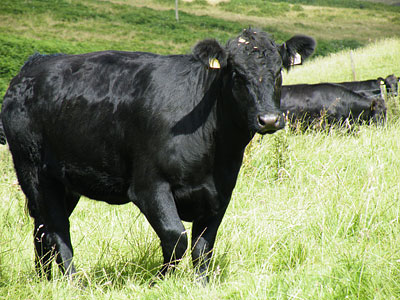Conservation and Sustainable Use of Our Farm Animal Genetic Resources
Published on 1 July 2013 in Ecosystems and biodiversity
Introduction
 This briefing focuses on a recent report on the status of the UK’s Farm Animal Genetic Resources (FAnGR), (see UK Country Report), highlights recent FAnGR research findings, and emphasises policy implications, including recent developments in the technology for livestock genetic modification.
This briefing focuses on a recent report on the status of the UK’s Farm Animal Genetic Resources (FAnGR), (see UK Country Report), highlights recent FAnGR research findings, and emphasises policy implications, including recent developments in the technology for livestock genetic modification.
FAnGR includes all livestock breeds, as well as semen and embryos. Ensuring that our FAnGR – whether in mainstream breeds or breeds ‘at risk’ of extinction - are conserved and used sustainably is important as:
- They are an important component of wider biodiversity which intrinsically deserves protection.
- Having diverse FAnGR will help us to respond to challenges such as improving global food security, and living with environmental change.
- They are of great economic importance, forming the foundation for livestock production in Scotland’s £34 billion food and drink supply chain.
- Many of our FAnGR, especially grazing animals, have a key role in managing the farmed environment and landscapes.
- They are of great social, cultural, and heritage importance.
- We have formal commitments to manage FAnGR – at domestic, European, and wider international levels.
There is a strong tradition of caring for FAnGR in the UK – thanks largely to the activities of individual breeders, breed societies, charities and other non-governmental organisations. Over the last 15 years, this has been augmented by a growing involvement of government whichhas included support for a series of technical advisory committees, including the current Farm Animal Genetic Resources Committee (see www.defra.uk/fangr). The committees have assisted in the production of reports supporting conservation and sustainable use of FAnGR; established robust definitions for, and categorised, FAnGR, especially identifying breeds at risk. They have also influenced animal health policy so that it affords additional protection to FAnGR; influenced environmental and biodiversity policies so that they recognise the role of FAnGR; and advised on research priorities and numerous other livestock policy issues.
Key Points
- There are currently around 700 breeds of farm livestock in the UK – representing about 9% of all global livestock breeds. Of these, 235 are UK native breeds, including iconic Scottish breeds.
- Over 75% of UK native breeds are at risk of extinction, as a result of small breeding population size, geographical concentration, or both.
- Threats to breeds at risk include economic pressures on livestock keepers who may cease to keep breeds at risk, the spread of fewer, specialised breeds, nationally and globally, and the threat from existing and emerging diseases.
- New scientific knowledge and technologies will offer both opportunities and threats to the conservation and sustainable use of FAnGR.
- Greater awareness of the importance and relevance of conserving FAnGR, and the national, EU and international obligations to do so, is essential.
Research Undertaken
Research has a key role in conservation and sustainable use of our FAnGR. Recent research commissioned to further underpin conservation and sustainable use of FAnGR includes projects on:
- molecular characterisation of breeds;
- the role of animal genetics in mitigating greenhouse gas emissions (led by SRUC);
- quantifying the contribution that FAnGR and selective breeding can make to improving nutrient use efficiency (led by SRUC);
- developing biodiversity indicators for native cattle and sheep breeds (led by SRUC);
- developing a co-ordinated strategy for conservation of FAnGR; and
- the development of a DNA-based tool to authenticate traditional-breed meat products.
For details visit Defra Science and Research Projects.
New scientific knowledge and technologies will offer both opportunities and threats to the conservation and sustainable use of FAnGR. New technologies are likely to include:
- Reproductive technologies – e.g. for sex ratio control, more efficient livestock cloning, manipulation of cells in vivo and selection in vitro.
- Genomic selection and related techniques - offering faster genetic gain especially for traits that are difficult to measure, like disease resistance.
- Statistical genetics techniques that will help in both selection and in genetic resource/diversity management.
- Biobanking and related technologies for conserving and recreating viable populations;
- Direct genetic modification of livestock, including via the new approach of gene editing, where small changes in DNA can be effected using techniques developed for gene therapy in human medicine.
Policy Implications
Key policy implications include the need for:
- Greater awareness of the importance and relevance of conserving FAnGR, and the national, EU and international obligations to do so.
- ‘Mainstreaming’ FAnGR in policy making – especially in developing biodiversity policy (where FAnGR needs to be explicitly included), environmental policy (where there are further opportunities for supporting FAnGR) and animal health (where the practice of providing special protection for FAnGR should be broadened).
- Continuing support for FAnGR research and knowledge exchange to develop its contribution to meeting domestic and international policy aims.
- Awareness of new scientific developments that impact on FAnGR – especially rapidly developing technologies such as gene editing, which is likely to result in genetically modified livestock being used in practice overseas within the next few years (e.g. to produce hornless cattle in currently horned breeds). This will lead to a dilemma for EU policy makers, as the technology could provide welfare benefits, but food production from such animals would be banned under current EU law.
Author
Professor Geoff Simm Geoff.Simm@sruc.ac.uk







